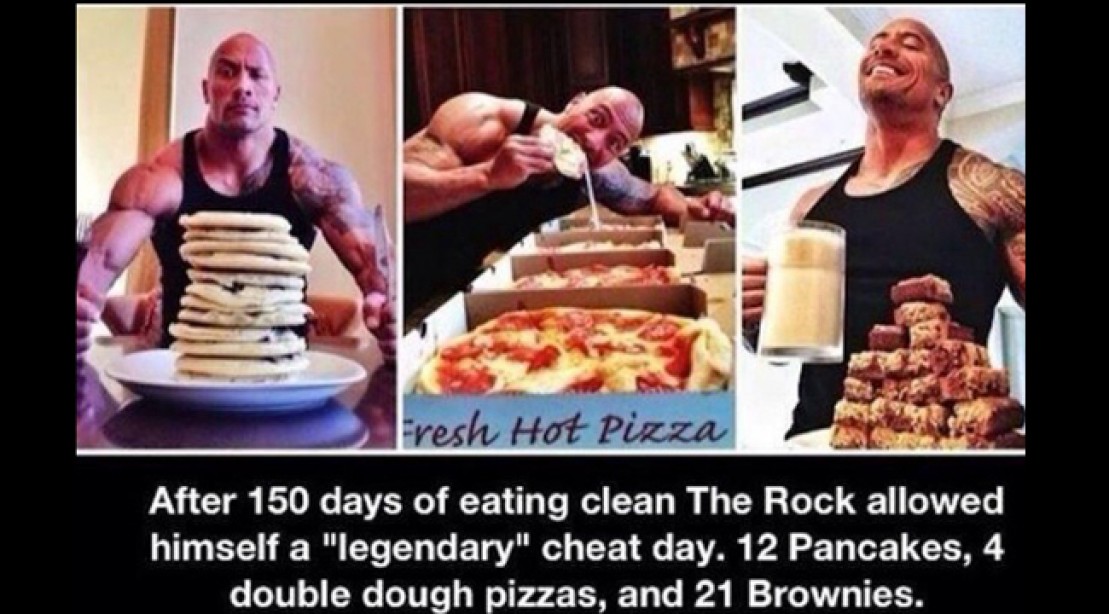The Rate-Limiting Step And Fitness
In chemistry, there’s a determination to the speed of a kinetic reaction that’s based on the speed of the rate limiting (or rate determining) step. Essentially, the speed of the entire reaction will only work at the speed of this step, as other steps and processes will occur at a faster rate.
For example, if we take hydrogen and oxygen and combine them to create water, the speed of the reaction is essentially a single step and just requires some ignition source, but the speed of the reaction is going to be based on the concentration and volume of the two substances. If you have a very big area with a small amount of hydrogen and compare that to a small canister of high pressure hydrogen, the small canister will light up much faster and more completely.
In metabolic reactions, whether it’s to produce more energy to power workouts, to mobilize fat, or to build muscle, the chemical reactions that lead to these events have rate limiting steps. Processes can be helped along with the inclusion of enzymes, but again the speed of these reactions is usually dependent on the amount of the enzymes and how much they have the ability to assist in the process.
To complicate matters, there’s usually multiple rate limiting steps, depending on which pathway through the Krebs cycle is being taken and what the available fuel source is, making it tough to specify the specific manners by which you could speed up the process. There is usually one, however, that produces the slowest development of products in the series, and this slow step would be considered rate limiting if it was in any way not optimized for the reaction it was developing.
One way to consider this is on nights where you decide to toss back a few adult beverages. In order to be cleared from your body, alcohol (in the form of ethanol) has to be metabolized into acetaldehyde, and then again into acetate in order to be excreted from the body. There’s 2 steps in here, and one of them is the slower of the two. The slow step is the conversion of ethanol to acetaldehyde, which means if you consume a lot of alcohol, the conversion of ethanol to acetaldehyde with the aid of alcohol dehydrogenase will happen slower than the ability of the body to convert acetaldehyde and remove it in from the body.
Acetaldehyde is considered toxic in higher or prolonged doses, and a class 1 carcinogen, while acetate is much less of a bother. Acetate also can go by other names like acetic acid, ethanoic acid, or vinegar. So it’s kind of a good thing that the body has ways to remove it as rapidly as possible. However, in some populations the conversion enzyme that turns acetaldehyde to something harmless and eventually into water and carbon dioxide only works part of the time, meaning your evening bottle of wine might be doing more harm than you thought if you’re not clearing that stuff as fast as your friend who has the good genes is able to do.
Typically, with sufficient enzyme present, the rate of breakdown from ethanol to acetaldehyde is between 110-130 mL of ethanol per kg of body weight per hour, and the more acetaldehyde in your system means more stuff like a red flushed face and wicked hangover. You usually have a couple of pathways to make this conversion happen, so it’s easy to convert to acetaldehyde, however there’s only a couple of pathways to do step 2, even if they’re faster. So you wind up with a bit of a bottle neck effect if you pound back too many Pilsners in an evening whereby you’re building up concentrations of acetaldehyde in your liver and blood stream and not clearing them as fast, making tomorrow morning a rough one.
Okay, so I’m sure a lot of people likely perked up at talks of booze and stuff, but probably aren’t sure how this relates to fitness and seeing #gainz all day long. Well, let’s get to that.
If you’re looking to gain muscle, get stronger, or lose body fat, there’s a lot of steps to the process that produce the desired results you’re looking for. Often we can sabotage our own best efforts in one step by doing something to stop the process in another. Take a weight loss program with a severe caloric restriction, but a full on binge fest each week where the person smashes every bit of food they can find into their protein-hole.
If you’re the Rock, you can do what you want.
So if you’re producing a daily caloric restriction of say 1000 calories a day, but then crush 10,000 on some random Friday by face-Trumping a couple large pizzas, a bottle of pop and some desserts, you’ve refilled the entire weeks deficit, meaning any change you may have seen will likely be blunted. What would be a better solution? Maybe having something like a 800 calorie a day deficit and a small treat of about 300-500 calories once every 2 or 3 days. Total deficit here is 5600 calories minus maybe 1500 calories for a total deficit of 4100 calories, much better than a 7000 calorie deficit refilled by 10,000 for a total surplus of 3,000 calories. Make sense?
Now what about if you’re trying to gain muscle or strength? Obviously having the training stimulus in there would be important, as would having sufficient protein to make new muscles, but what else? Recovery? I’ll sleep when I’m dead, am I right?!?!?
Except for the fact that insufficient sleep hurts muscle growth in a couple of different but still substantial ways. If you’re tired, you can’t put much effort into the workouts, so you’re behind the eight ball unless you take a pre-workout stimulant, again, like an eightball.
Without sufficient training intensity, you can’t build them biceps.
A lack of sleep also causes a number of hormonal alterations that can affect protein synthesis. Between changes in concentrations of things like glucocorticoids, cortisol, testosterone, insulin-like growth factor, and and overall proteolytic environment, not getting enough sleep won’t just make you tired, but small and weak too.
Ask an athlete how they see their biggest improvements in performance, and they’ll say when they’re sleeping 9-10 hours a night. Ask when they perform their worst and it will likely be if they’re only squeaking out 7 or fewer hours.
Bodybuilders? Probably taking the odd muscle nap throughout the day. Same with strength athletes. Most powerlifters don’t roll out of bed at 6am and start tossing around plates. For a good detailed overview of all of this stuff, click here.
So let’s say you’re not making any progress in your fitness or body composition goals. Check around for rate limiting variables or steps that could be holding you back. Are you doing a massive cheat on your nutrition and not getting the quality of food you need to power the workouts, or smashing calories like WalMart customers hoarding Halloween candies? Or are you crushing entire seasons of Luke Cage or Stranger Things each night instead of getting some shut eye, then waking up to only be powered by caffeine? Maybe the lack of sleep is powering the carb-fests for a double whammy of fail?
In each example, adjusting the outcomes to either stay consistent with nutrition or getting more sleep, if truly a rate limiting step, would produce significant benefits in a rather short period of time. This is a reason why keeping a journal or record book of your workouts can be so important, as you can always look back on PRs, training weights and loads, and how you felt for each workout and see what you’re able to do now with a few variable changes to see what the outcomes actually are. If crashing an hour earlier each night adds 100 pounds to your deadlift (not the most likely outcome, but hell, take it if it comes to you), you have some info to make regular long snoozes a part of your lifestyle.
Rate limiting steps are literally what they’re called: they LIMIT progress in a reaction to produce results. Putting them in a state where they can optimize the relationship they’re in can help move the production along at the fastest rate possible, and doing something to slow them down grinds the entire thing to a slower speed. If you’re looking to make faster gains in your own fitness program, try to identify your own rate limiting steps, whether they be training volume or intensity, nutrition, or recovery, and see if you can adjust them to get them into a better state to see progress.
Science for the win.




One Response to The Rate-Limiting Step And Fitness